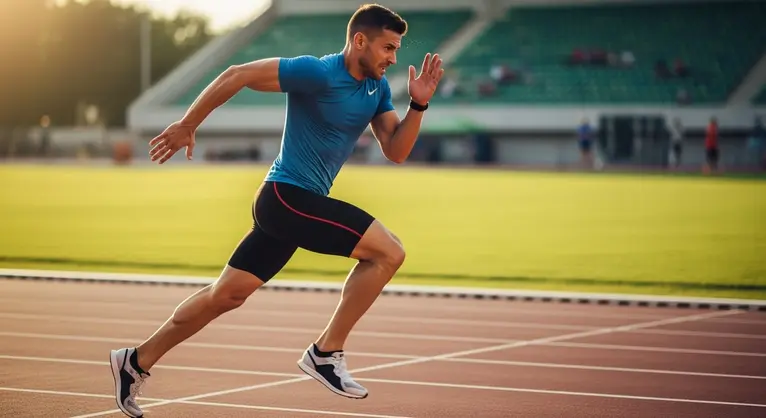Recovery & Injury: Practical Strategies for Every Athlete to Stay Strong and Motivated
Injuries happen—even to the best. Whether you’re a weekend warrior, a gym newbie, or a seasoned athlete, staying healthy and minimizing setbacks are key to progress. As someone who’s spent years coaching athletes and learning from experts at GymPulse, I know firsthand that how you prevent and recover from injuries makes all the difference in your long-term performance and motivation.
Let’s explore practical, science-backed strategies that anyone can use, no matter your sport or skill level.
Understanding Common Sports Injuries
Knowing what you’re up against is half the battle. Here’s a quick snapshot of the most frequent injuries in fitness and athletics, plus simple ways to stay ahead:
| Injury Type | What It Means | Quick Prevention Tip ||———————–|—————————————-|—————————————|| Sprains & Strains | Overstretched or torn muscles/ligaments| Warm up well, train flexibility || Overuse Injuries | Repetitive stress (tendonitis, etc.) | Vary intensity, schedule rest || Stress Fractures | Tiny bone cracks from overload | Balanced nutrition, don’t overdo || Concussions | Brain injury from impact | Safe technique & protective gear || Muscle Tears | Tissue rupture from sudden force | Progress training slowly |
Think of your body like a high-performance engine: a little ongoing care can prevent big repair bills down the road.
Prevention Principles for Every Athlete
Injury prevention isn’t just for pros—it’s for everyone. Here’s what works:
- Strength Training: Regular, sport-appropriate routines improve joint stability and muscle balance. Even 2 sessions per week can lower injury risk dramatically.
- Focus on Form: One bad rep can cause months of pain. Work with a coach or film your technique to spot early errors.
- Prioritize Rest: Schedule recovery days. Your muscles (and mind) need downtime to rebuild stronger.
- Hydrate Like a Pro: Dehydration is behind more cramps and strains than people realize. Keep water or electrolyte drinks on hand.
Don’t forget screenings—many clubs (including GymPulse) offer periodic body composition checks using devices like InBody to identify imbalances before they become problems.
Recovery Protocols that Work
Injuries happen, but solid recovery routines shorten downtime and prevent re-injury.
Sleep: Your Superpower
Aim for 8–10 hours of quality sleep. This isn’t just a luxury—it’s when tissue repairs and your nervous system recalibrates. If you’ve pulled a muscle, sleep is your best (and cheapest) medicine.
Active Recovery & Nutrition
- Active Recovery: Take easy walks, do gentle yoga, or swim on your off days. This boosts blood flow and helps muscles clear out waste.
- Eat to Heal: Focus on lean proteins (chicken, fish, tofu), mixed with fruits, veggies, and healthy fats. After an injury, your body’s like a building site—give it premium materials!
- Pro Gadgets: Foam rollers, massage guns, and compression gear work wonders to ease soreness and promote circulation.
- Tech Tools: Use fitness apps to monitor sleep, hydration, and workout intensity—stay on track and spot trends.
Know when to call for backup: A physical therapist or certified trainer can create a personalized plan to get you back in action safely. For a detailed step-by-step plan, check out our injury recovery checklist.
Psychological Wellness—Staying Motivated
Injury recovery isn’t just physical—it challenges your mind and morale. Here’s how champions (and everyday athletes) keep going:
- Mindfulness & Meditation: Just 5 minutes daily can lower stress and help you stay resilient through setbacks.
- Counseling: Professional help is a game-changer if frustration or anxiety builds up. Many clubs offer access to certified counselors.
- Community Counts: Share your journey with teammates, friends, or an online group. Motivation multiplies when you’re not alone.
At GymPulse, we celebrate every step of progress—because wellness is a team sport.
Conclusion: Small Changes, Big Impact
Preventing injuries and bouncing back stronger isn’t about hacks or shortcuts—it’s about smart habits, solid support, and the right tools. Whether you’re chasing a personal best or just want to stay active and pain-free, small changes today will pay off for years.
Curious to learn more? Connect with our experts at GymPulse, join a community class, or just drop by for a chat. Strong recovery, fewer injuries, and a motivated mind—you’ve got this!

